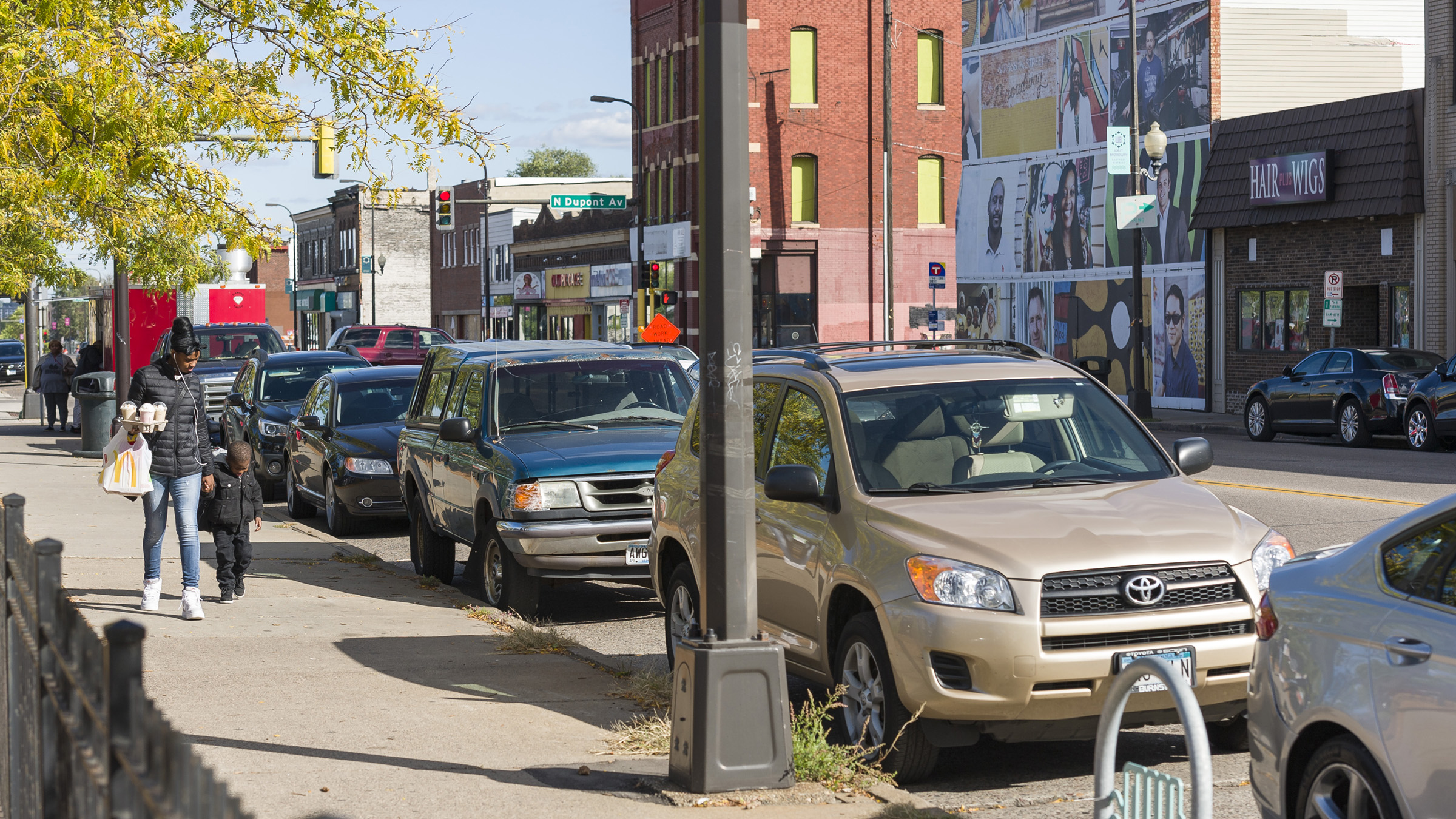If someone flies solo on a conventional mortgage application, they’re less likely to stick the landing than they would be if they had a co-applicant. Even when applications and applicants are similar, solo applicants are more likely to be denied than dual applicants. The disparities in denial rates between solo and dual applicants are larger for Black and Latino/a applicants than for White applicants. Moreover, people of color are more likely to apply alone for a mortgage than White applicants. As a result, the differential success rates for solo applicants exacerbate racial disparities in mortgage denials.
Solo mortgage applicants are more likely to be denied a mortgage
Building on our previous analysis of the number of people per mortgage application over 2018–2021, we found unexplained disparities in denial rates for solo applicants compared to dual applicants. In our sample of mortgage applications from the confidential Home Mortgage Disclosure Act (HMDA) dataset,* 56.1 percent feature a solo applicant. Lenders denied 3.7 percent of applications in our sample overall; the denial rate for solo applicants is 4.3 percent compared to 3.0 percent for dual applicants. Some of this gap can be explained by differences in the characteristics of solo applicants—such as their income or debt-to-income ratio—and the loans they sought, as lenders report in the HMDA dataset. After factoring in such differences—that is, estimating the impact of applications submitted by solo applicants having similar characteristics to those submitted by dual applicants—the denial rate for solo applicants is 4.1 percent compared to 3.0 percent for dual applicants.
The share of applications with co-applicants varies by race and ethnicity. As shown in Figure 1, White applicants are the least likely to apply for a mortgage alone. Applications submitted by at least one White applicant are over 50 percent more likely to have a co-applicant than applications submitted by at least one Black applicant: 31 percent of applications submitted by at least one Black applicant have a co-applicant, compared to 48 percent of applications submitted by at least one White applicant.
Loan applications with White co-applicants fare better
The association of having a co-applicant with the success of a mortgage application varies by the race and ethnicity of the applicants. For example, as Figure 2 shows, solo Black applicants are 2.4 percentage points (or 66 percent) more likely to be denied than dual Black applicants. That’s three times as large as the gap of 0.8 percentage points between White solo applicants and White dual applicants.
Dual White applicants had a substantially lower denial rate than any other same-race dual applicants, at only 2.3 percent. Denial-rate differences between dual White applicants and solo applicants of color are also noteworthy. For example, after controlling for application characteristics, a solo Black applicant was 3.8 percentage points (or 167 percent) more likely to be denied than two White applicants.
Of course, not all dual applications feature two applicants of the same race. Substantial gaps exist between same-race dual applications and dual applications that feature an applicant of color and a White applicant. When Black, Latino/a, or Asian applicants have a White co-applicant, their denial rate is lower than when Black, Latino/a, or Asian applicants have a co-applicant of the same race. The differences are striking: When Black and Latino/a applicants have a White co-applicant, they are approved at essentially the same rate as White dual applicants (and more often than White solo applicants).
Adjusted denial rates also differ by gender
HMDA data allow us to examine denial rates by applicants’ gender. To identify any potential gender differences, we applied the same method used to analyze denial rates by race. Applications could feature a solo male, a solo female, a male and a female, two males, or two females. Figure 3 shows the gender breakdown of our data sample.
As Figure 4 shows, solo male White, Black, and Latino/a applicants have higher adjusted denial rates than same-race solo female applicants, or same-race dual applicants of any gender combination. Among single-race/ethnicity Latino/a and White applications, female-female and opposite-sex applicants have the lowest denial rates. Among Black applicants, opposite-sex applicants have the lowest denial rate. Among Asian applicants, denial rates do not differ significantly by gender or presence of co-applicant. Consistent with our findings above, within the same gender group, White applicants have lower denial rates compared to applicants of color even after controlling for application characteristics.
No easy explanations for disparities in mortgage denials
When people of color, solo applicants, and solo males apply for similar loans on comparable properties as their peers with similar credit and socioeconomic characteristics, they are denied a mortgage more often. The intersections among these categories don’t explain the overall differences in denial rates between White applicants and applicants of color, which are substantial: Black, Asian, and Latino/a applicants are 2.8 percentage points, 2.1 percentage points, and 1.4 percentage points, respectively, more likely to be denied a mortgage than White applicants, who were denied at a low rate of 2.9 percent.
The difference between Black and White applicants’ denial rates can’t be explained solely by the fact that Black applicants are more likely to apply alone than White applicants. If the answer to racial disparities were so straightforward, there’d be no reason applicants of color find greater success when they have a White co-applicant.
Some advocates and banking industry professionals we’ve spoken with suggest that more racial diversity or better training on bias among loan officers would benefit loan applicants of color. This idea is supported by a 2021 examination of loan officers’ behavior published by the Federal Reserve Bank of Philadelphia that identified possible biases that work against Black applicants. Additionally, we know that the HMDA data do not include several important factors that influence loan-approval decisions, such as the sources of applicants’ income, their credit histories over time, and their wealth.
As HMDA data do not include a measure of liquid assets, the wealth gap remains a major, unmeasured factor that affects solo applicants and applicants of color. As groups, individuals and people of color bring fewer assets to the home-buying process. Black and Latino/a households generally have far less wealth than White households. Individuals generally have less wealth than married couples—but similar amounts to non-married couples—and married couples may be more likely to have access to intergenerational wealth. Moreover, a portion of the dual applicants in our sample are parents who co-sign their children’s loans in order to improve the likelihood of approval. Households headed by an individual male have more wealth than households headed by an individual female, while households headed by same-sex couples tend to have less wealth.
Future articles will examine data further
Minneapolis Fed researchers are continuing to examine the HMDA data for additional insights into the racial disparities in conventional mortgage-denial rates. To supplement our previous article examining these issues, our team is meeting with mortgage-industry professionals, regulators, and consumer groups to gather ideas for future work.
For their part, lenders and others in the mortgage industry can examine their richer internal data to identify any potential barriers to approval for applicants of color and solo applicants. The data clearly imply that people are missing out on homeownership, even if their credit, income, and anticipated housing costs suggest they are a safe bet.
Endnote
* Sample includes 30-year conventional, conforming, first-lien, single-dwelling, primary-residence, home-purchase applications that meet government-sponsored enterprises’ underwriting requirements. We exclude open lines of credit and loans for commercial or business purposes. See our previous analysis, described in our working paper, for more detail on the sample and methodology.
Libby Starling is Senior Community Development Advisor in Community Development and Engagement at the Federal Reserve Bank of Minneapolis. She focuses on deepening the Bank’s understanding of housing affordability, concentrating on effective housing policies and practices that make a difference for low- and moderate-income families in the Ninth Federal Reserve District.








